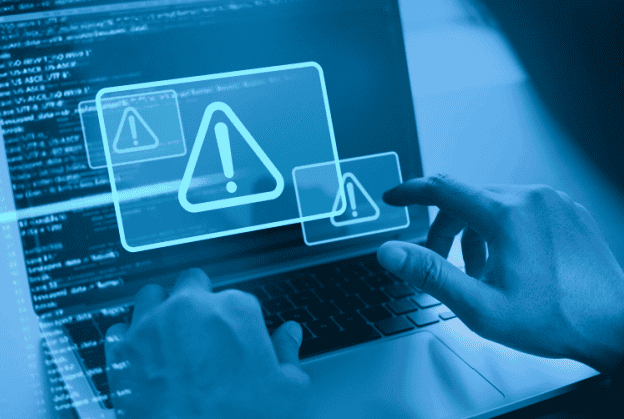Picture a cyber assault that doesn’t just strike once, but embeds itself in your systems, silently extracting valuable data over months or even years—that is the daunting reality of Advanced Persistent Threats (APTs). APTs are long-term, targeted cyberattacks orchestrated by highly skilled adversaries, often with substantial resources and specific objectives, such as espionage, data theft, or sabotage. Unlike typical cyberattacks, which might aim for immediate gains or cause quick disruptions, APTs are designed to infiltrate and persist within networks over extended periods, causing sustained damage and extracting valuable information. Understanding and mitigating APTs is crucial for maintaining the integrity and security of an organization’s data and operations. These threats represent a significant challenge that requires a vigilant approach to cybersecurity. Without a comprehensive strategy, organizations remain vulnerable to these ever-evolving threats.
Advanced Persistent Threats (APTs) are a specific type of cyberattack characterized by their long-term presence and highly targeted nature. Unlike typical cyberattacks, which often focus on immediate gains or causing quick disruptions, APTs are meticulously planned and executed with the intent to remain undetected within a network for an extended period. This prolonged presence allows attackers to gather significant amounts of sensitive information, cause substantial operational disruption, or even lay the groundwork for future attacks. APTs involve a high level of sophistication and persistence, often employing advanced hacking techniques and tools. These threats are typically carried out by well-funded adversaries, which can include organized crime groups or highly skilled independent hackers. The attackers behind APTs invest considerable time and resources to achieve their objectives, making these threats particularly challenging to defend against.
Common Goals of APTs
The primary goals of APTs can vary, but they generally fall into three categories:
- Espionage: Stealing sensitive information, such as intellectual property, trade secrets, or confidential communications.
- Data Theft: Extracting valuable data, including personal information, financial records, or proprietary business data.
- Sabotage: Disrupting operations, damaging critical infrastructure, or undermining the target’s capabilities.
One extremely notable APT attack example is Stuxnet, which was a highly sophisticated worm that targeted Iran’s nuclear facilities, causing large amounts of physical damage to centrifuges. Understanding the nature and objectives of APTs is the first step in developing effective defense strategies. These attacks are not random but are instead carefully directed at specific targets to achieve precise outcomes. The combination of advanced techniques, persistence, and substantial backing makes APTs a formidable challenge in the realm of cybersecurity.
The Lifecycle of an APT Attack
Understanding the lifecycle of an Advanced Persistent Threat (APT) attack is crucial for effectively detecting and mitigating these sophisticated threats. APT attacks are methodically executed in several stages, each designed to achieve specific objectives while maintaining stealth and persistence within the target network. Here, we outline the typical stages of an APT attack:
- Initial Intrusion: Attackers gain access to the target network through spear-phishing emails or exploiting known vulnerabilities. This stage aims to establish an initial foothold without raising suspicion.
- Establishment of Foothold: Malware is installed to maintain access and establish communication with command-and-control servers. This allows attackers to control the compromised system remotely.
- Escalation of Privileges: Attackers seek to obtain higher-level access by using techniques such as credential dumping or exploiting misconfigurations. Elevated privileges enable lateral movement within the network.
- Internal Reconnaissance: Detailed mapping of the network is conducted to identify valuable targets. Attackers gather information on sensitive files, databases, and email communications.
- Lateral Movement: Attackers compromise additional systems using legitimate credentials and exploiting trust relationships. The goal is to access systems holding valuable information.
- Data Exfiltration: Identified data is transferred out of the network without triggering security alerts. Encryption and covert channels are often used to mask the exfiltration process.
- Maintaining Persistence: Measures are implemented to ensure ongoing access, such as installing additional backdoors or modifying system configurations. This allows attackers to return even if initial access points are discovered and closed.
Identifying APTs early is crucial for minimizing the damage they can cause. APTs are designed to operate stealthily, but they often leave subtle signs and indicators. Unusual network activity, such as unexpected data flows or irregular communication patterns with external servers, can be a red flag. Anomalous user behavior, like access requests at odd hours or from atypical locations, might also indicate a compromise. Additionally, persistent, low-level attacks that do not fit the pattern of typical cyber threats can signal an ongoing APT presence. Continuous monitoring and analysis of network traffic, user behavior, and system logs are essential for detecting these covert operations.
Mitigating the risks associated with APTs requires a comprehensive approach combining proactive measures, robust detection, and swift response strategies. Proactive measures include regular software updates and patch management to close vulnerabilities that attackers might exploit. Implementing strong access controls and conducting regular security audits help ensure that systems remain secure. Advanced threat detection tools and incident response planning are critical for identifying and responding to APTs promptly. Continuous monitoring and logging provide real-time insights into potential threats. Collaboration and intelligence sharing with industry peers and participating in threat intelligence platforms can also enhance an organization’s ability to defend against APTs. By adopting these comprehensive strategies, organizations can significantly reduce the risk and impact of advanced persistent threats.




